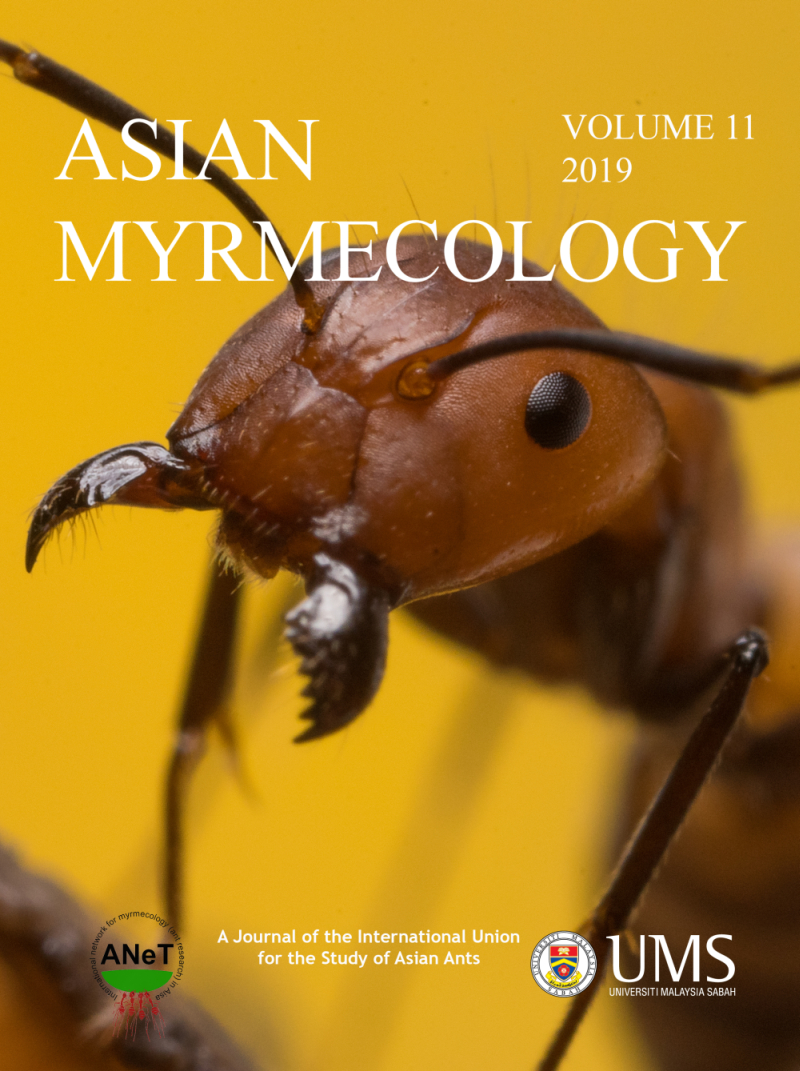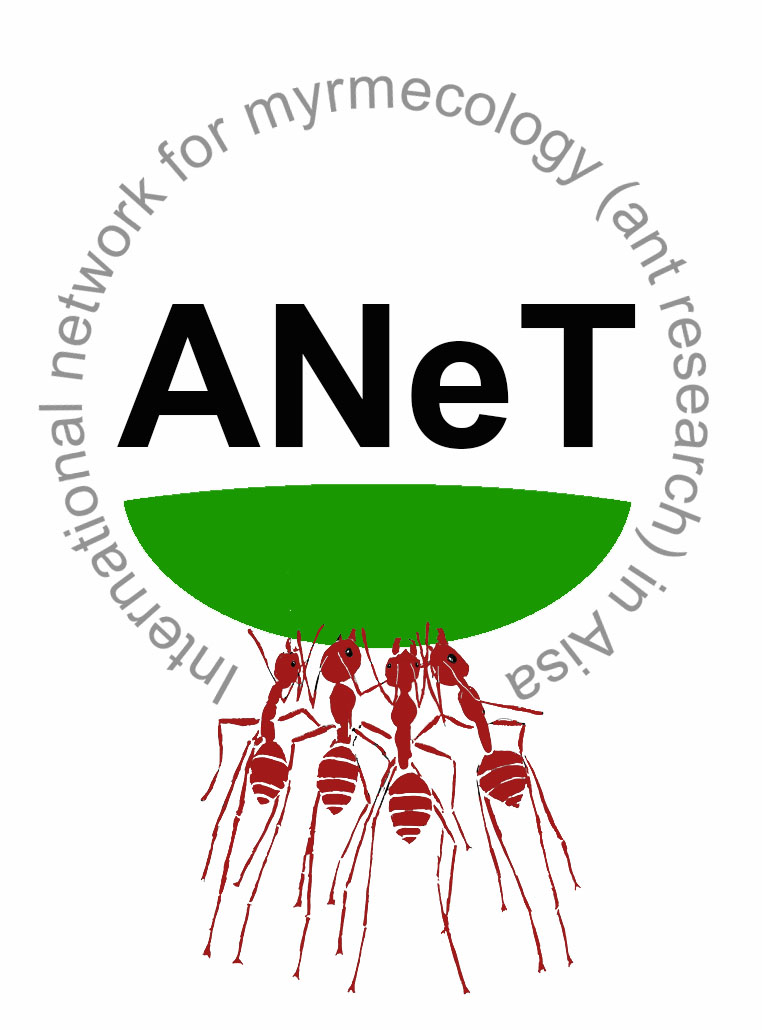ASIAN
MYRMECOLOGY
Image: François Brassard
online first (online version of paper published before print issue)
DOI: 10.20362/am.011002
Asian Myrmecology 11: e011002 (1-11)
article first published online: 05/December/2019
Interception of exotic ants and survey of the ant fauna at Gaoming Port, China
XIAOWEN YANG1, 2, DONGDONG NING1, MEIHONG NI1, BABAR HASSAN1*, JIAJIAO WU3* & YIJUAN XU1*
Abstract:
Globalization of trade and tourism has promoted the dispersal of exotic animals and plants around the world. Quantifying the invasion of exotic insects resulting from overseas trade is essential for national and international risk assessments. Seaports are important hubs for the arrival of exotic insects and a pathway for the invasion of alien species. Analyzing the interception data of exotic species at seaports and investigating the surrounding areas can improve our understanding and limit the risks of biological invasions. In this study, we examined the diversity of ant species associated with different shipping commodities and the origin of exotic ants arriving at Gaoming Port, China, during 2014–2017. In addition, we surveyed the ant communities at the port using bait and pitfall traps. We found 609 records of ants that were intercepted from foreign imports over a four years period, with most originating from Southeast Asian countries. Dolichoderus thoracicus and other species belonging to this genus were the most frequently intercepted species, accounting for 35.79% of interceptions. Solenopsis spp., Anoplolepis gracilipes and several other species presenting significant risks to ecosystems, agriculture, forestry and human health were also intercepted on several occasions. Field surveys showed that Solenopsis invicta was the dominant ant species in the seaport ant community, which also harbored other known tramp species, such as Tapinoma melanocephalum and Paratrechina longicornis. This study indicates that there is high probability of the introduction of foreign ants through seaports. Strengthening quarantine work and monitoring at and near ports is helpful for reducing the risks of the establishment and spread of exotic ants during the early phases of invasion associated with ports.
Keywords:
Risk analysis; Exotic ants; Port investigation; Prevention and control
Get PDF (1230K):
1Red Imported Fire Ant Research Center, South China Agricultural University, Guangzhou 510642, China
2Gaoming Office of Foshan Customs, 528500, China
3Guangdong Inspection and Quarantine Technology Center, Guangzhou Customs, 510623, China
*Corresponding authors: sialuaf@gmail.com, wujj@iqtc.cn, xuyijuan@scau.edu.cn


